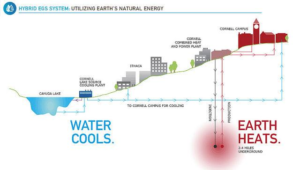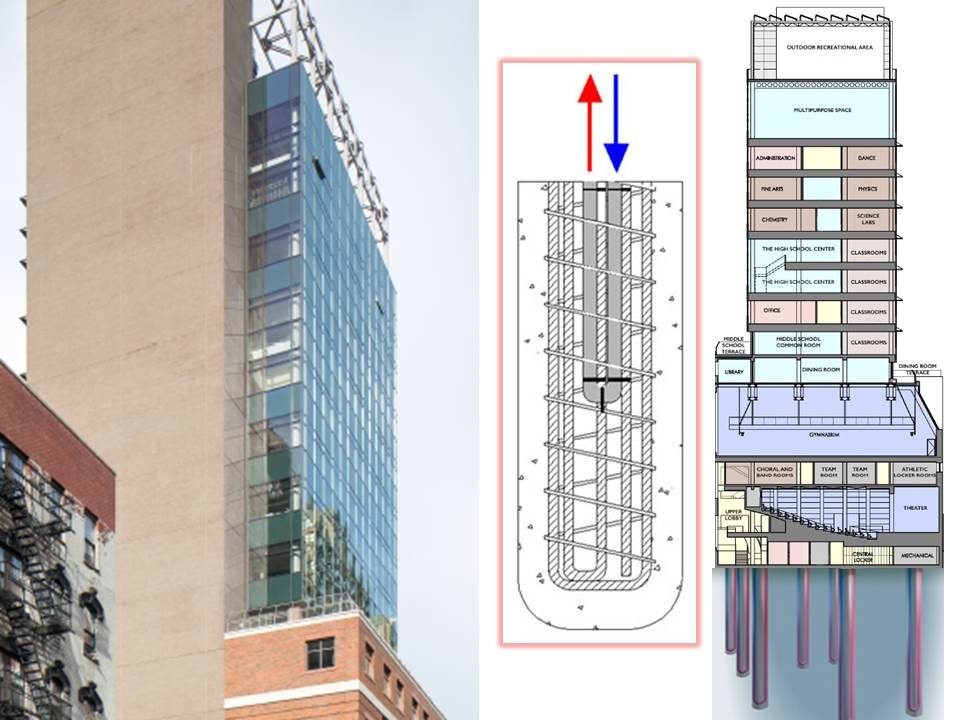In 2015, at the Conference of Paris (COP), The United Nations Framework Convention on Climate Change (UNFCCC) came to an agreement that an ambitious undertaking for combating climate change was necessary . To put the dire situation into perspective, it is stated that half a million people die a year due to outdoor air pollution . In order to put this goal into motion, there is a need for not only a financial commitment but also a push for innovation. The largest city attempting to accomplish the goal of lowering greenhouse emissions by 80% by 2050 is New York. Interestingly enough, 70% of New York’s greenhouse gas emissions are due to “dirty buildings” . The state challenged these so called “dirty buildings” to clean up their act or face the consequence of fines as high as one million dollars. It is written that large buildings are to cut their emissions by 40% by 2030 and 80% by 2050. While these goals are ambitious; they can be accomplished with an overhaul of efficient energy systems. Large buildings and Universities alike are looking toward geothermal energy for its potential as an efficient energy system. University research, Laws, and strict guidelines are paving the way for a rise in Geothermal energy in New York City.
University Innovation
Cornell University in Ithaca New York uses Cayuga Lake as a source for cooling its campus (Figure 1). The campus has reduced electricity consumption for central campus air by 86% and over all electricity use by 10 percent. In their “Earth Source Heat Project,” Cornell proposes to circulate initially cool water through subsurface reservoirs, where it will be naturally heated by the warmer temperature of the rocks. The school director projects that the entire project from research to drilling may be accomplished within 6 years, but faculty and students alike agree this is a rough estimate. Universities such as Cornell are providing research for the New York area to grasp a better understanding of energy efficient systems. However under the City itself is there easement for a project as such?

City Innovation
Upon first glance it may be questioned if geothermal energy can be implemented in the sparse available easement in the city. After a study was commissioned by the state government in 2015 it was determined that it was not only possible, but that there were multiple ways that geothermal systems could be implemented in these tight places. A year later, New York Mayor De Blasio signed a bill “requiring all City owned buildings to undergo a cost efficiency analysis to determine favorability of geothermal systems.” Trevor Day School was the first educational institution to contribute to the Mayor’s Geothermal goals (figure 2) (“NYC building”). The School is heated and cooled by energy piles. Geothermal energy piles use the near constant temperature of the ground to heat and cool spaces.

Geothermal heat piles are a relatively new energy technique. The piles of the building strategically provide dual functionality. In more detail, the piles both support the building as well as provide geothermal heating and cooling. It works by employing a closed piping system within the pile itself (figure 2). Within the pipes there is a mixture of water and some form of antifreeze. This fluid moves through the pipes by means of a heat pump. This system is convenient for its dual responsibility, efficiency and affordability. In spite of its convenience; there is little comprehensive data with regard to heat piles. More specifically there is a lack of calculation methods for the design of geothermal heat piles. The complex interaction between the thermal storage and mechanical behavior of the structure is not fully understood within the design. Because of the lack of information, the safety factor for the piles is considerably increased. Not only that, but while the energy pile are efficient; construction workers argue that they are costly because they require “nonstandard construction skill”. The use of energy piles continues to be both common as well as questionable.

Recent Comments